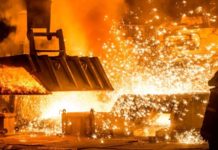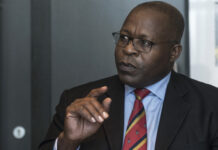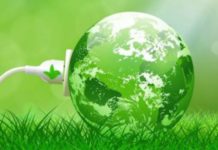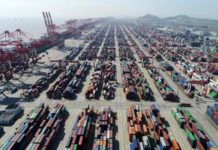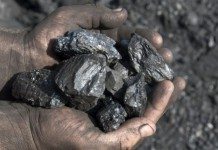
[miningmx.com] — THE latest version of the Integrated Resource Plan (IRP2) has created “a pretty grim scenario if you are a coal producer”.
That’s according to Ian Hall, chairperson of the South African Coal Road Map Steering Committee.
Addressing the Coaltrans South Africa coal conference in Sandton on Tuesday, Hall raised questions over whether targets set out by the IRP2 could realistically be achieved.
He told delegates: “There’s often a disconnect between policy and implementation, and it’s not just in South Africa where that happens.
“What I am saying is that installing 17 gigawatts (GW) of renewable energy and 10GW of nuclear energy in South Africa by 2030 is a very tall order to deliver.
“You have to ask whether it is going to happen. I can’t answer that question, but what I want to do is raise the issue of the alternatives if it’s not going to be delivered.
“I also want to point out that decisions to change the plan have to made in good time. It takes 10 years to build a power station like Kusile.”
Hall laid out four possible energy scenarios, in which he termed the IRP2 as the “current policies scenario”.
He said that under current policies, reserves in the Waterberg, Soutpansberg and Limpopo coal fields would remain largely undeveloped.
As a result, he said, there would be no further significant investment in the coal industry – New Largo and Grootegeluk would be the last major collieries built in the country – and also no requirement for any major expansion of the country’s rail infrastructure.
“Eskom would secure its coal requirements from the Central Basin – the coal fields around Witbank and Middelburg from where the bulk of the country’s coal is currently mined – through having restrictions imposed on coal exports,” Halls said. “It’s a pretty grim scenario.”
He said an alternative approach – more favourable to the coal sector and the economy as a whole – is what he termed the “business as usual’ scenario which would require the IRP2 to be modified.
“Under this scenario you assume the 17GW of renewable energy and the 10GW of nuclear energy is not going to happen as quickly as planned.
“That results in decisions to bring forward coal-fired power stations and to enable coal-fired independent power producers.
“It will result in the development of the Waterberg and Soutpansberg fields, the construction of more multi-product mines and the expansion of rail infrastructure such as the proposed coal line from the Waterberg to Mpumalanga.
“That’s a win-win for the coal industry and the country. It will allow generation of power at the cheapest cost as well as an increase in coal exports.”
Asked by a delegate about Eskom’s moves to limit coal export volumes, Hall said the power utility was working on the assumption that its stations would only be able to source coal from the Central Basin.
“If you assume there is going to be no further infrastructural development – in that the railway lines required to bring coal to the power stations in Mpumalanga from the Waterberg will not be built – then Eskom is correct. They probably will run out of the low grade coal they need, which is why they want to limit exports.
“But that ignores the fact that we are sitting with large reserves of this coal elsewhere in the country.
“Limiting coal exports would be a short-sighted solution. Even Eskom acknowledges there is a huge conflict between limiting coal exports and attracting future investment.”
Hall also raised concerns over the carbon tax being proposed by the South African government.
“A carbon tax of R200 per tonne would add between R300 and R400 to the cost of a tonne of coal. Eskom paid around R200/t for the coal it bought last year, so implementation of such a carbon tax would treble the price that Eskom has to pay for coal.”




